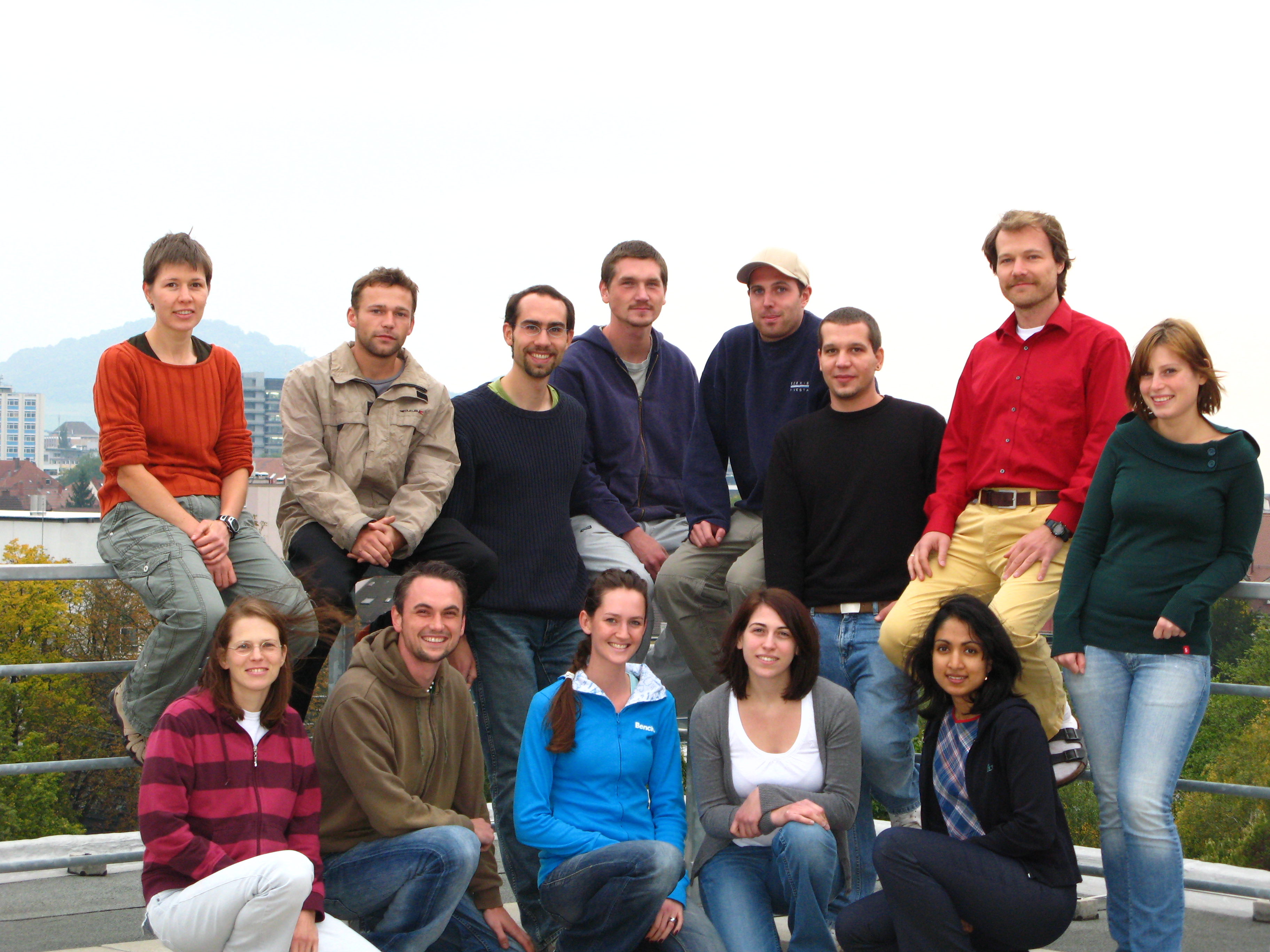Modular Synthetic Receptor System
Abstract
Signaling through membranes is a characteristic of life. Transmembrane proteins control proliferation, differentiation, and cellular response and are key for the formation of multicellular organisms. Controlling such proteins enables modifying cellular behavior and ultimately programming cells at will. The complex rules for transmembrane signaling often require engagement of several proteins in a fine-tuned spatial and temporal manner.
To tap possibilities of transmembrane programming, the Freiburg 2008 iGEM team provides an extensible system comprising an external framework with spatial resolution, a concept for modifying natural receptors, and a modular set of fusion-Biobricks for the construction of synthetic receptors. Spatial resolution in the nanometer scale is provided by DNA-Origami modified with distinct patterns and combinations of ligands. Receptors are decoupled from their natural ligands by fusion with artificial binding domains. The Biobrick collection contains signal sequences, binding domains, transmembrane domains, and effector domains featuring split enzymes and split fluorescent proteins for immediate readout.
Wiki
https://2008.igem.org/Team:Freiburg
Achievements
- Finalist
- 1st Runner Up, Winner of the PoPS Prize
- Gold Medal

Primary PI
Student Members
- Daniel Hautzinger
- Kathrin Pieper
- Kristina Brückner
- Michael Kneib
- Moritz Busacker
- Norman Kilb
- Philipp Mappes
- Robert Gawlik
- Weber Simone
Instructors
- Dr. Katja Arndt
- Maxima Swamy
- Prof. Dr. Wolfgang W. Schamel
- Janina Speck
- Dr. Christian Fleck

